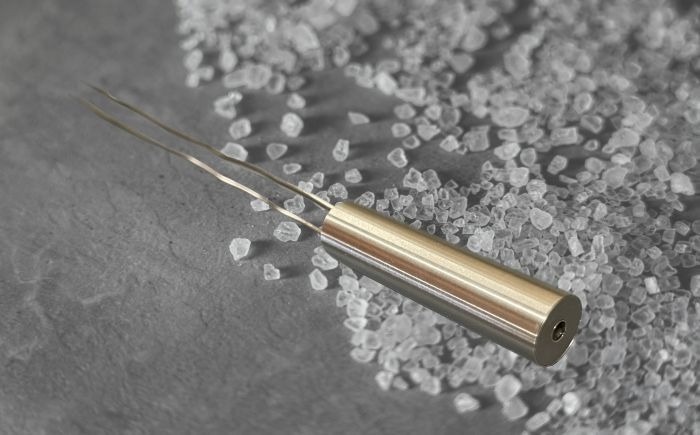NewTek Sensor Solutions, a US-based manufacturer of linear and rotary position sensors, is developing an advanced Linear Variable Differential Transformer (LVDT) specifically designed to withstand the extreme environments found in next-generation molten salt reactors (MSRs). These reactors utilize molten salt as either a coolant or a solvent for nuclear fuel, providing a cleaner and safer approach to nuclear energy.

Image Credit: NewTek Sensor Solutions
Accurate position measurement is essential in MSRs for monitoring and controlling essential mechanical systems, including control rods, fuel handling systems, and maintenance tools. However, designing sensors for these applications is challenging due to the high operating temperature, intense radiation and corrosive nature of molten salts at elevated temperatures. Within the main containment areas, any sensors present must be rated in the 930 °F to 1300 °F (500 °C to 700 °C) range.
Conventional position sensing technologies, such as magnetostrictive and potentiometric sensors, are generally unsuitable for these demanding conditions. In contrast, LVDT position sensors remain the most viable solution for direct displacement measurement, offering contactless operation, high resolution and excellent long-term reliability. These attributes are essential for the precise control of critical reactor components such as control rods and fuel handling systems in molten salt reactors.
To address the unique challenges posed by MSRs, NewTek is custom-engineering a specialized LVDT design that incorporates:
- High-temperature and corrosive-resistant housing materials that are compatible with molten salt environments.
- Specialized cables rated for extreme heat and radiation.
- Hermetic or bellows-type seals to protect internal components from salt vapor and splashing.
- Ratiometric signal output, which minimizes thermal drift and ensures stable performance across wide temperature ranges.
These next-generation LVDTs can provide excellent linearity (±0.5% of full range) and high resolution and repeatability for precise reactor control. In addition to the new LVDT design, NewTek is collaborating with partners to develop an LVDT-based pressure sensor to monitor molten salt pressure in irradiated environments – another critical parameter in MSR safety and efficiency.
Currently, NewTek offers the HT-1000 Series of AC-operated LVDTs for extreme high-temperature environments such as nuclear reactors and engine systems. These sensors are rated for continuous operation up to 1000 °F (538 °C) and high radiation exposure up to 100 MRad. Available in measurement ranges from ± 0.500 inch (± 12.7 mm) to ± 1.0 inch (±25.4 mm), the HT-1000 Series delivers high sensitivity, excellent linearity and dependable performance in demanding applications such as fuel rod monitoring and autoclave testing.